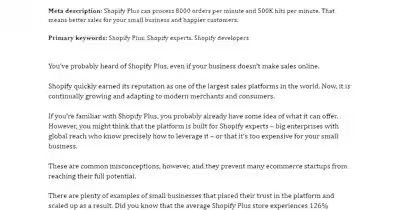eBook: Embedded investments: fintech's next frontier
A 3500-5000 word eBook written for Seccl, an investment technology provider, in order to establish them as a leading voice in the embedded investments space.
Here is a sample from the eBook. To view the entire project, visit Seccl.tech.
Table of contents
About this guide
We believe ‘embedded investments’ (or ‘embedded wealth’, as you might hear it called) is fintech’s next great frontier.
It’s an exciting – albeit nascent – trend that can bring exciting opportunities for ambitious brands and create seamless, intuitive user experiences for a new generation of investor.
If you’re a neobank, a fintech operating in an adjacent category, or even an ambitious brand operating in a completely different vertical altogether, this guide is for you – providing a brief introduction to the topic, exploring its roots in embedded finance and unpacking its potential impacts.
We demonstrate how companies of all shapes and sizes can deploy embedded investment propositions to create a new revenue stream, bolster profitability and make the most of their existing brand loyalty.
And we reveal research showing the consumer demand for investment offerings from brands that don’t operate in this space today. All of which begs the question… are the leading investment platforms of tomorrow hiding in plain sight?
Any questions or feedback? Let us know. We’d love to hear from you.
The journey so far… Embedded finance
Before we explore where we think the market’s headed, let’s take stock of where we are now – and recap on the embedded finance trend that has fundamentally transformed customer experiences over the last decade or so.
Put simply, embedded finance refers to the trend of integrating financial products or services within an existing brand or user experience.
Of course, the trend of non-financial brands distributing financial services isn’t new. Store cards and insurance add-ons for car rentals, for example, date back over fifty years. But it’s only with the technological developments of the last few decades that brands have been able to seamlessly integrate these offerings within their digital experience.
It’s this practice of digitally embedding financial products within a non-financial brand’s online or in-app user journey that, we think, is the defining characteristic of ‘embedded finance’ – and helps to underscore its dramatic rise to ubiquity.
Today, companies operating in all sectors can easily and affordably integrate a broad and growing range of products and services, including…
Embedded payments
Payments provide perhaps the most obvious example of embedded finance solutions. Not too long ago, the checkout stage represented a break in an otherwise seamless online journey, as customers were directed onto a third-party platform or browser to complete their transaction.
But today’s consumer can expect companies of all shapes and sizes to provide fast, friction-free and fully integrated payment options – facilitating payments by card, digital wallet (for example Apple Pay or Google Wallet) or even credit options (more on that below).
In fact, so commonplace is the phenomenon of embedded payments that more than half of shoppers would give up on a purchase if they encountered any checkout friction. In other words, it’s now the price for entry.
Embedded insurance
The distribution of insurance products in a retail context provides a great example of the evolution of embedded finance as a whole.
After all, consumers have been able to purchase insurance policies in a retail context for over 70 years. For example, coin-operated insurance vending machines were a common sight in North American airports during the 1950s and 1960s, capitalising on the pre-flight nerves of early air travellers.
As Accenture note in their brief overview of embedded insurance, “purchasing life insurance at the airport before a flight was ‘Version 1.0’ of embedded.”
Over the coming decades, insurance policies would come to be sold alongside other physical goods at the point of in-person purchase. And they still are. Head in store to buy an electrical appliance and it’s likely you’ll be offered an extended warranty; while sales agents at car dealerships or rental companies will no doubt offer you insurance policies on the forecourt or at the counter.
But today, insurance products are distributed seamlessly as part of the online purchase journey, too. Whether you’re buying train tickets on Trainline or plane tickets on Skyscanner, hiring a car on Zipcar or Turo – or even ordering a Tesla – rarely should you be forced to look elsewhere…
Embedded credit
The distribution of loan facilities has followed a similar evolution to that of insurance policies. Consumers have been able to purchase goods ‘on finance’ for many decades, either through store cards (sometimes referred to as ‘private label credit cards’) or through credit facilities offered by third-party banking or credit institutions.
Today, credit can be offered instantly and efficiently as an online payment option, as a rapidly growing number of brands look to sell goods and services on a ‘buy now, pay later’ (BNPL) basis – allowing customers to pay for their purchases over a number of instalments.
Popularised by Klarna (at one time Europe’s most valuable private tech company), consumer uptake of BNPL offerings has surged on the back of the coronavirus pandemic and the ecommerce boom that it generated.
While sometimes controversial – Deliveroo raised eyebrows in the autumn of 2022 when it announced a partnership with Klarna that allowed diners to spread the cost of purchases over £30 – the demand for embedded credit looks set only to grow in today’s high inflation environment.
General characteristics
Distributed either post-sale, or in-person alongside physical purchase
Clunky and disjointed
Distributed instantaneously as part of an online or in-app checkout journey
Seamlessly integrated
Payments
Delivered outside of the product by third-party payment processers and banking providers
Online/in-app payment processing via card or digital wallets
Instant, cross-border payments
Insurance
Pre-flight insurance vending machines
Car rental or purchase
Extended warranties
Insurance sold in-app alongside other online purchases
Hyper-personalised to activity duration and cover required
Credit
Store cards
Banks traditionally appointed as third-party loan issuer, deciding credit decisions for loans
Buy now, pay later (BNPL) and retail lines of credit
Invoice financing
A trend that’s here to stay
Estimates on the size of the embedded finance market vary wildly, but all commentators agree on one thing: it’s large – and growing. According to PwC, “the market for embedded finance applications is projected to grow fivefold, from US$54.3 billion in 2022 to US$248.4 billion, by 2032”.
And while embedded payments, credit and insurance policies have become an expected part of the everyday retail experience, we think the emerging trend of embedded investments looks set to be just as disruptive…
Like this project
Posted Sep 5, 2024
An eBook exploring the concept of embedded investments, to launch a fintech company's new investment products and establish them as a thought leader.







